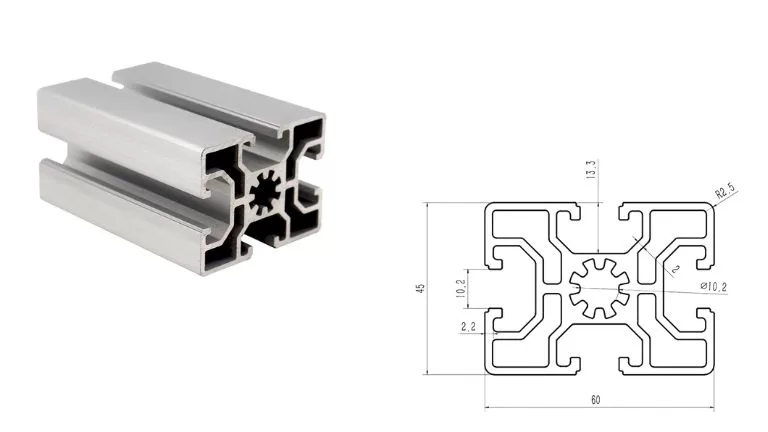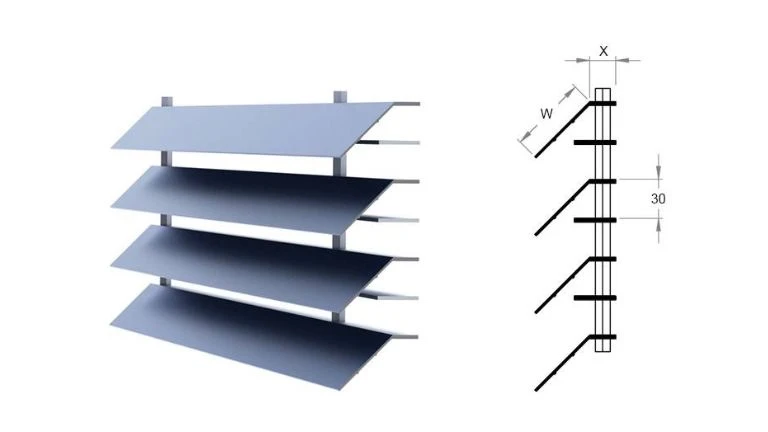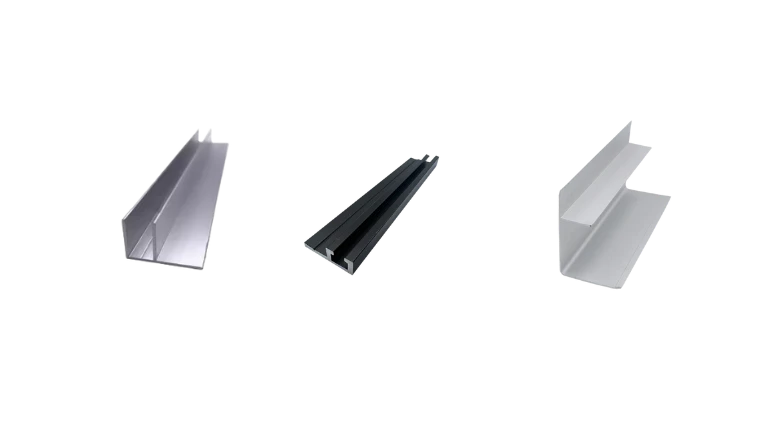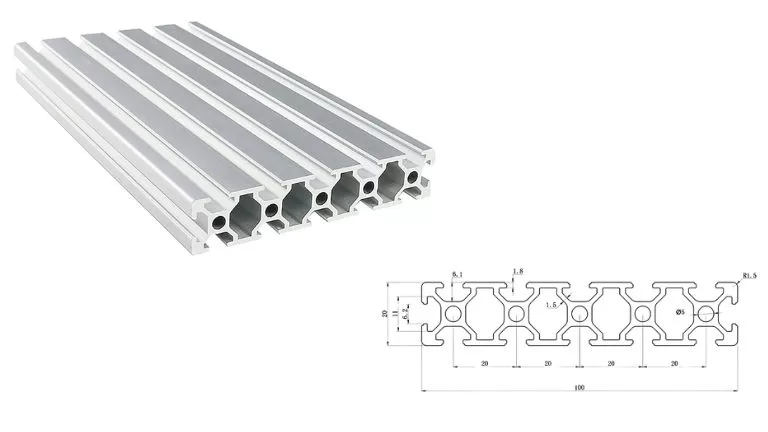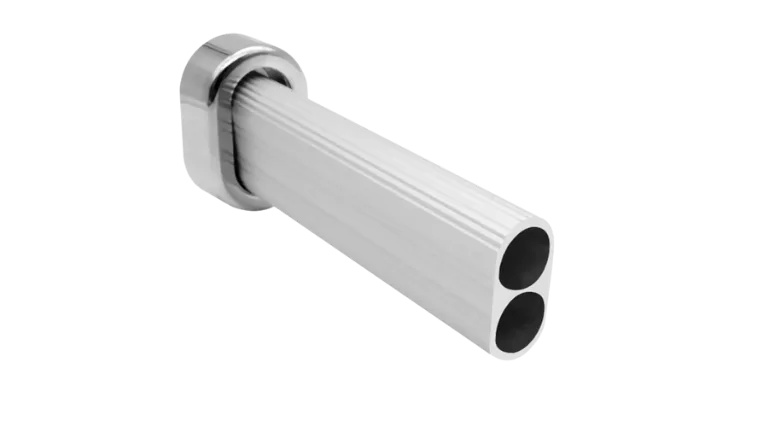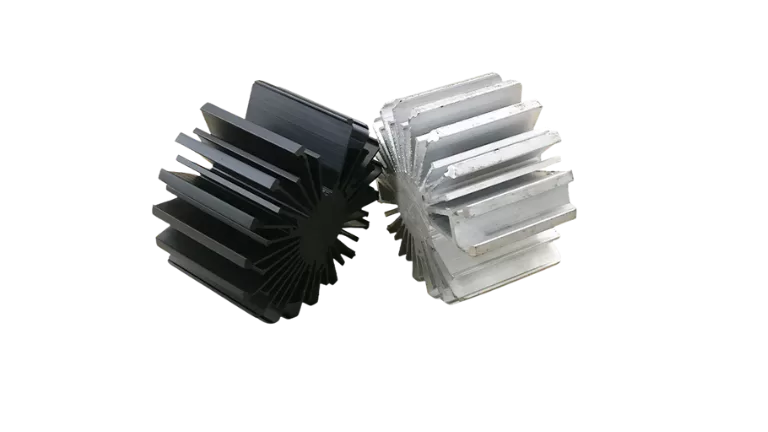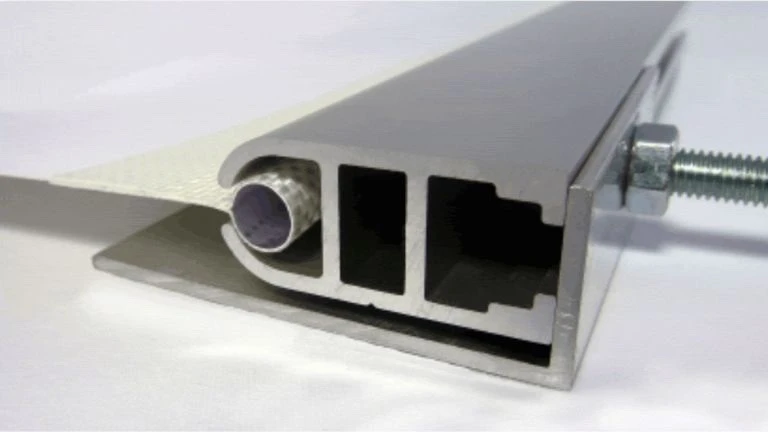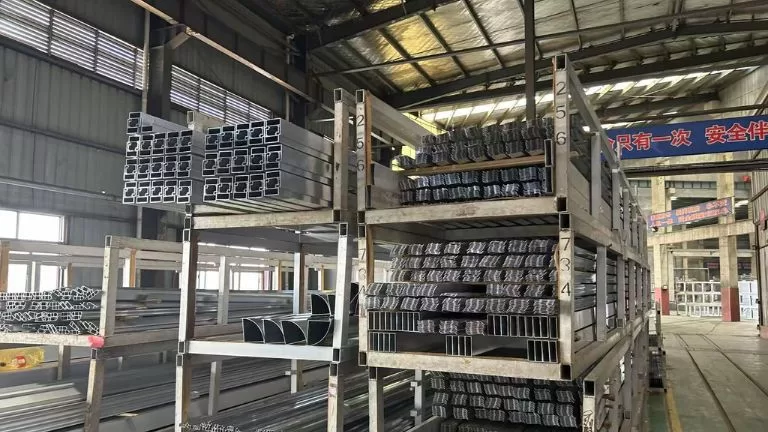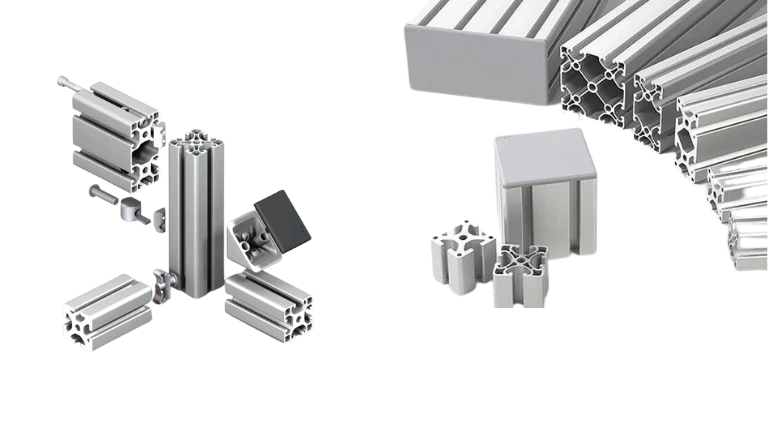Custom Aluminium Airfoil | Wing Extrusion for Louvers and Decorations
Overview
Aluminium wing profiles, also known as aluminium airfoil extrusions, are versatile profiles designed to enhance the functionality and aesthetics of various architectural elements. These profiles, shaped to resemble the cross-section of an airfoil or wing, offer exceptional properties for managing airflow, light distribution, and privacy. Their robust yet lightweight nature makes them ideal for applications such as louvers, exterior wall decorations, interior partitions, and ceilings.

Extruded Aluminum Airfoil in Architectural
Aluminum extrusion profiles are highly versatile and can be used in a variety of architectural and structural applications. They offer a combination of strength, flexibility, and aesthetic appeal, making them ideal for both functional and decorative elements in building design.
Aluminium Wing Extrusion for Louvers
Aluminum extruded profiles are ideal for louvers, offering optimal airflow and sunlight control in buildings. Their durability and sleek design enhance both functionality and aesthetic appeal, contributing to energy efficiency by managing sunlight exposure effectively.
Aluminium Aerofoil Extrusion for Exterior Wall Decorations
Aluminum profiles are widely used for exterior wall decorations, adding a modern touch to building facades. Their versatility allows for custom designs that enhance architectural styles while providing structural integrity.
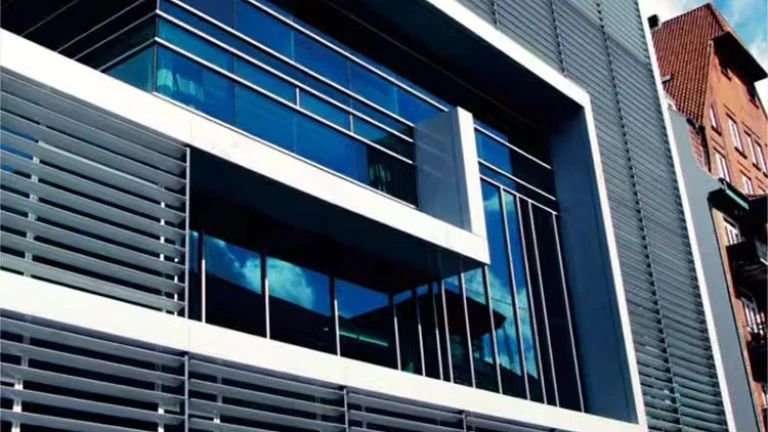
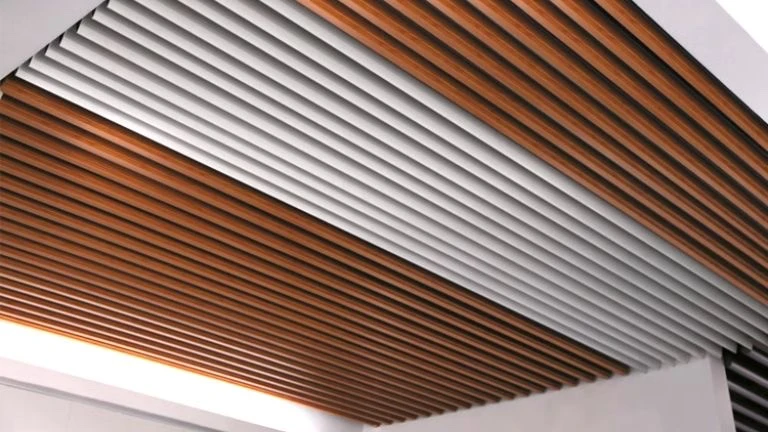
Aluminium Airfoil Extrusion for Interior Partitions
Aluminum extrusions are perfect for creating stylish and functional interior partitions. These partitions are customizable, lightweight, and easy to install, making them a popular choice for modern space management in both commercial and residential settings.
Aluminium Airfoil Extrusion for Ceilings
Used in ceiling applications, aluminum profiles offer architectural beauty and help manage acoustics. Their reflective properties improve interior lighting, while their durability makes them a practical choice for long-lasting ceiling solutions.
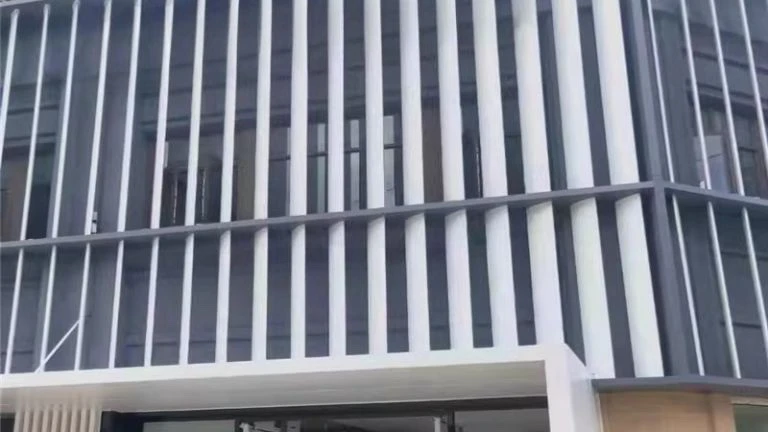
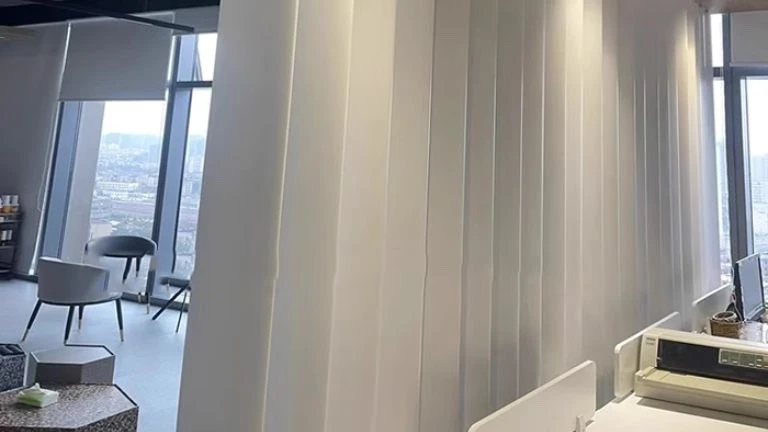
Custom Aluminium Airfoil Extrusion
At HTS-Alu, we specialize in custom aluminium extrusions. Our tailored services ensure that each extrusion meets specific aesthetic and functional requirements. We collaborate closely with architects and designers from the concept phase to the final product, ensuring each airfoil extrusion enhances the architectural integrity and energy efficiency of the building.
Mold Development
For each custom aluminium airfoil extrusion project, we begin by crafting a precise mold based on the provided blueprints or sample pieces. This mold creation process takes approximately 7 days. Once the mold is ready, we conduct a trial production run to create initial samples. These samples are then sent to the client for confirmation, ensuring that the final product will meet all specified requirements and expectations before full-scale production commences. This step is crucial for achieving the highest level of accuracy and client satisfaction in our architectural extrusions.
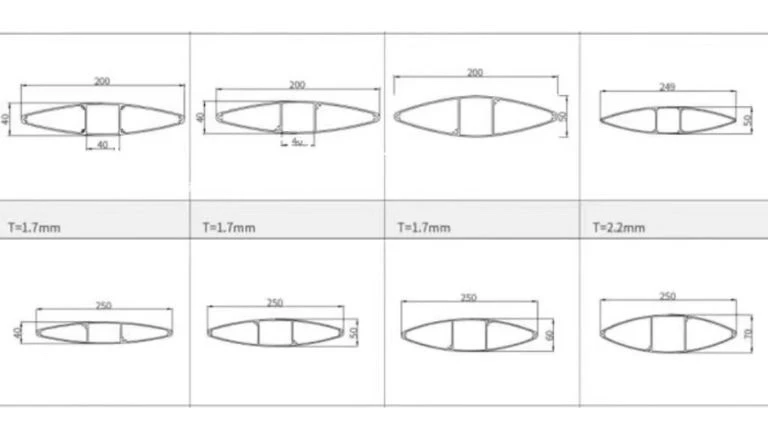
Aluminum Alloys and Heat Treatments
For architectural applications, we predominantly utilize 6063 and 6061 aluminum alloys, both of which are renowned for their excellent finish and balance of strength and weight.
6063 Aluminum Alloy: This alloy is particularly favored in architectural applications due to its superior surface finish and high corrosion resistance. It is typically treated to the T5 temper, which involves cooling from an elevated temperature shaping process and then artificially aging it. This heat treatment enhances its mechanical properties, making it suitable for architectural details that require both aesthetic appeal and durability.
6061 Aluminum Alloy: Known for its versatility, 6061 alloy provides a robust structural composition that is also suitable for welding and corrosion-resistant applications. When treated to the T5 temper, 6061 exhibits increased strength and toughness, making it an excellent choice for structural elements of buildings where higher strength is required.
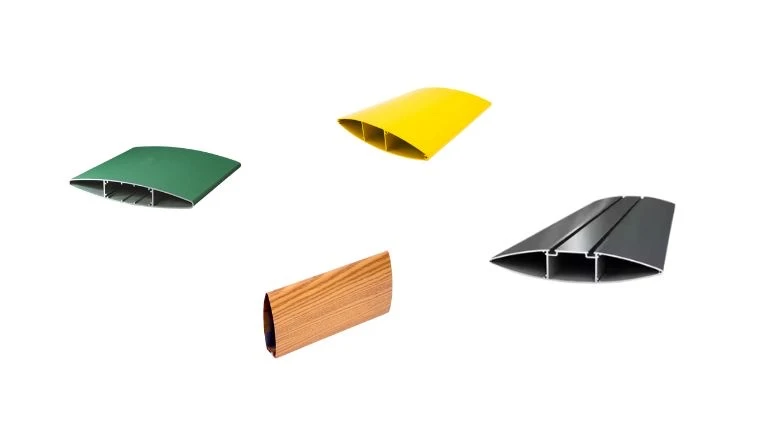
Common Surface Treatments
Surface treatments not only enhance the durability and weather resistance of aluminium airfoil extrusions but also contribute to their aesthetic appeal.
Anodizing: This treatment is particularly beneficial for architectural applications, providing a durable, corrosion-resistant finish that can withstand environmental elements. It also allows for color customization, which can be matched to other building components.
Powder Coating: Ideal for achieving a uniform and vibrant appearance, powder coating protects the extrusions against corrosion and UV degradation. It is available in a wide range of colors, allowing for complete customization to fit the architectural design.
Wood Grain Finish: Through sublimation processes, aluminium can mimic the appearance of wood, providing a warm, inviting aesthetic without the maintenance required for real wood. This finish is popular for applications that require a natural look but need the durability of metal.
Machining after Extrusion
Following extrusion, airfoil profiles may undergo additional machining processes such as cutting, drilling, bending, and CNC machining to ensure precise integration into their architectural applications. These steps are crucial for achieving the high level of detail and fit required in architectural projects.
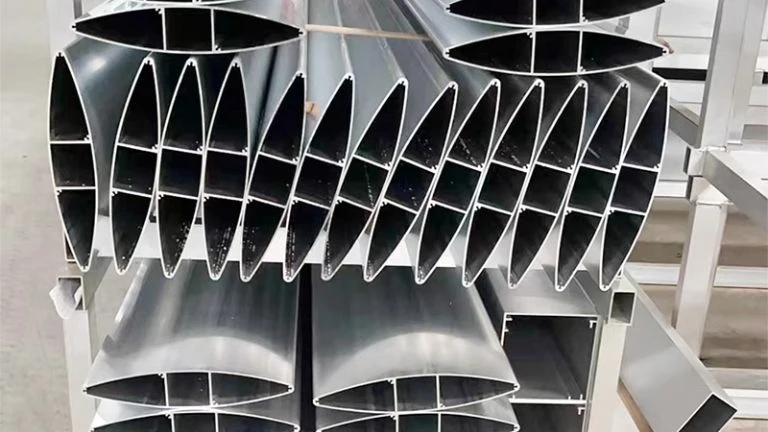
Delivery Time
Delivery timelines typically range from 10 to 20 days for a standard 26-ton batch, allowing for thorough quality assurance and adherence to client specifications. This schedule ensures that we deliver high-quality, custom-fitted aluminium airfoil extrusions that meet the exact needs of your architectural projects.
Anodizing, electroplating, sandblasting, powder coating, fluorocarbon painting, and wood grain transfer are available to achieve the desired finish and durability.
Why Choose Our Aluminium Airfoil Extrusions?
Choosing our custom aluminium airfoil extrusions means opting for a product that offers unmatched design flexibility, durability, and aesthetic appeal. Our profiles meet the highest quality standards and are designed to contribute positively to the architectural integrity and functionality of your projects.
If you are planning to incorporate innovative and efficient aluminium airfoil extrusions into your architectural designs, reach out to us today. Let us assist you in crafting solutions that not only meet but exceed your expectations in terms of performance and style.
Custom Your Aluminum Profile
Our aluminum extrusion factory, located in Nanchang, Jiangxi Province, covers an extensive area of 30,000 square meters and is home to a dedicated workforce of over 120 skilled individuals.
Advanced Extrusion Lines
Boasting over 30 high-precision extrusion production lines from Japan and Germany, we ensure unmatched quality and efficiency.
Custom Mold Design and Processing
We tailor-make molds based on client designs or samples, providing prototypes for confirmation to meet precise specifications.
Comprehensive Surface Treatment Techniques
Our surface treatment capabilities include anodizing, electroplating, sandblasting, powder coating, fluorocarbon painting, and wood grain transfer printing to enhance product durability and aesthetics.
Over Two Decades of Expertise
Since 2013, we have been manufacturing aluminum profiles, accumulating vast experience in producing a wide array of profiles for windows, doors, and various industrial applications.
Aluminium Profile Solutions
At HTS Aluminium, we pride ourselves on our ability to deliver custom aluminium profile solutions tailored to the unique needs of each client. Our bespoke services are grounded in a deep understanding of our clients’ visions, which we bring to life by transforming drawings or samples into precision-engineered aluminium profiles.

Precision Aluminum Extrusion Process
Our state-of-the-art manufacturing facility is equipped with advanced extrusion presses and precision cutting tools, allowing us to handle even the most complex profiles with exceptional accuracy. Our team of skilled technicians brings years of industry experience to the table, ensuring that every extruded aluminium profile meets the highest standards of quality and precision.
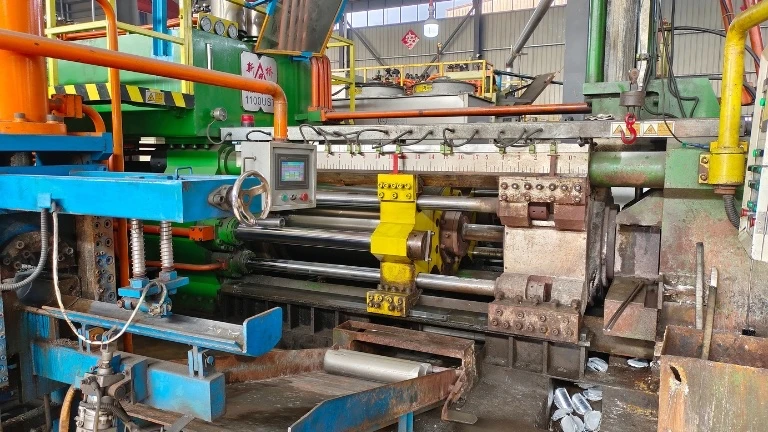
Design and Manufacture of Moulds
We at HTS Aluminium specialize in the design and manufacture of custom moulds based on client specifications. Once a mould is created, we conduct trial productions and send samples to our clients for confirmation. This meticulous process ensures that the final product perfectly aligns with our clients’ expectations.

Material for Extruded Aluminum
Quality begins with the raw materials, and at HTS Aluminium, we use only the highest standard aluminium alloys for our extrusions. Our profiles are commonly crafted from a selection of industry-standard grades, each offering a balance of strength, durability, and corrosion resistance to meet various application requirements.
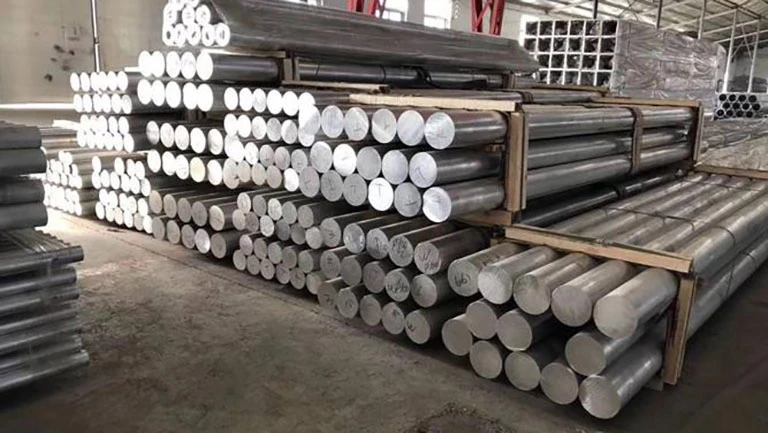
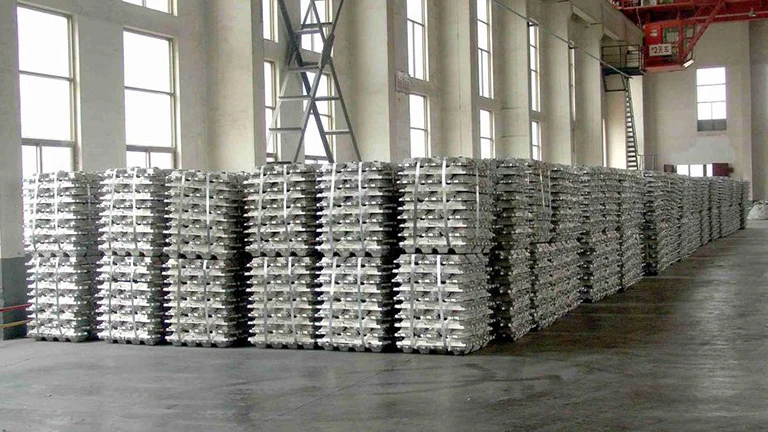
5052: Offers excellent corrosion resistance, good weldability, and moderate-to-high strength. It is a popular choice for marine and automotive applications.
Silicon (Si): 0.25% (Maximum)
Iron (Fe): 0.40% (Maximum)
Copper (Cu): 0.10% (Maximum)
Manganese (Mn): 0.10% (Maximum)
Magnesium (Mg): 2.2-2.8%
Chromium (Cr): 0.15-0.35%
Zinc (Zn): 0.10% (Maximum)
Remaining Balance: Aluminum (Al)
6061: A versatile alloy with good mechanical properties, weldability, and corrosion resistance. It is widely used for structural applications and in the automotive industry.
Silicon (Si): 0.40-0.80%
Iron (Fe): 0.70% (Maximum)
Copper (Cu): 0.15-0.40%
Manganese (Mn): 0.15% (Maximum)
Magnesium (Mg): 0.8-1.2%
Chromium (Cr): 0.04-0.35%
Zinc (Zn): 0.25% (Maximum)
Titanium (Ti): 0.15% (Maximum)
Remaining Balance: Aluminum (Al)
6063: Often referred to as an architectural alloy, it has a smooth surface finish and is commonly used in window and door frames.
Silicon (Si): 0.20-0.60%
Iron (Fe): 0.35% (Maximum)
Copper (Cu): 0.10% (Maximum)
Manganese (Mn): 0.10% (Maximum)
Magnesium (Mg): 0.45-0.90%
Chromium (Cr): 0.10% (Maximum)
Zinc (Zn): 0.10% (Maximum)
Titanium (Ti): 0.10% (Maximum)
Remaining Balance: Aluminum (Al)
7075: One of the strongest aluminum alloys available, with zinc as the main alloying element. It is used in applications where strength is critical, such as in aerospace and military components.
Zinc (Zn): 5.1-6.1%
Magnesium (Mg): 2.1-2.9%
Copper (Cu): 1.2-2.0%
Chromium (Cr): 0.18-0.28%
Silicon (Si): 0.40% (Maximum)
Iron (Fe): 0.50% (Maximum)
Manganese (Mn): 0.30% (Maximum)
Titanium (Ti): 0.20% (Maximum)
Other elements: Each 0.05% (Maximum), Total 0.15% (Maximum)
Remaining Balance: Aluminum (Al)
Heat Treatment Options
Our aluminium profiles can undergo a range of heat treatment options to enhance their properties. From T5 to T6 treatments, we tailor the process to achieve the desired level of hardness, strength, and elasticity. Each treatment option is designed to bring out the best in the material, ensuring that the final product stands up to the demands of its application.
T5 Heat Treatment
Process: Cooled from an elevated temperature shaping process and then artificially aged.
Characteristics: Increases the strength of the aluminum by accelerating the aging process, resulting in a material that has moderate strength and good formability.
T6 Heat Treatment
Process: Solution heat-treated and then artificially aged.
Characteristics: Provides a significant increase in strength compared to T5 by altering the microstructure of the aluminum. This results in a high-strength material with good machinability and fair formability.
Aluminum Profile Surface Treatment
To ensure the longevity and aesthetic appeal of our telescopic aluminum profiles, we offer a range of surface treatments including:
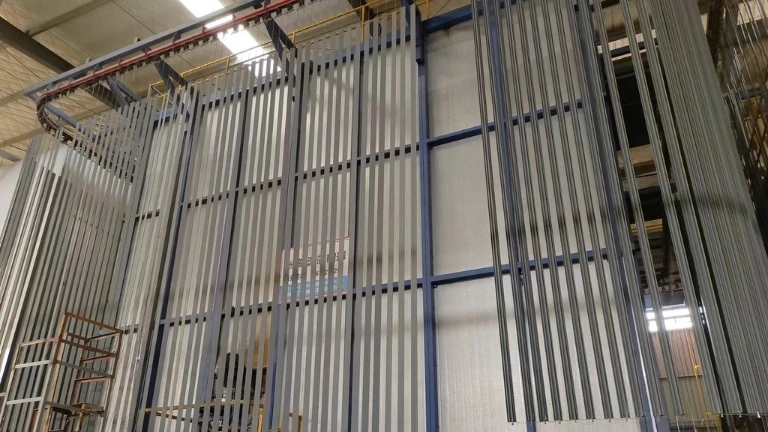
Anodizing: The Protective Shield
What is Anodizing? Anodizing is an electrochemical process that thickens and toughens the naturally occurring protective oxide on the surface of aluminum profiles. This treatment enhances corrosion resistance and wear resistance, making the aluminum surface harder and more durable.
Key Advantages
Improved corrosion resistance
Enhanced surface hardness
Aesthetic appeal with a variety of color options
Better adhesion for paints and primers
Increased thermal insulation properties
Electroplating: The Metal Finish
What is Electroplating? Electroplating involves the deposition of a metal coating on the extruded aluminum profile. This process can be used to improve corrosion resistance, increase surface hardness, and add a decorative finish.
Key Advantages
Enhanced corrosion resistance
Decorative finishes with various metal types
Increased surface hardness
Improved wear resistance
Sandblasting: The Texture Artist
What is Sandblasting? Sandblasting is a mechanical process where abrasive materials are blasted onto the aluminum surface at high velocity to clean or modify its texture. This is often used to prepare the surface for further treatments or to achieve a specific aesthetic look.
Key Advantages
Uniform surface finish
Improved surface cleanliness
Enhanced paint and coating adhesion
Aesthetic texture options
Powder Coating: The Colorful Protector
What is Powder Coating? Powder coating is a dry finishing process where a powder material is electrostatically applied to the aluminum surface and then cured under heat to form a skin-like coating. This method provides a durable, uniform, and attractive finish.
Key Advantages
Wide range of color options
Uniform, durable finish
Excellent resistance to chipping, scratching, and corrosion
Eco-friendly process with minimal VOC emissions
Fluorocarbon Painting: The Weather Warrior
What is Fluorocarbon Painting? Fluorocarbon painting involves applying a fluorocarbon resin-based paint to the aluminum profile, which offers exceptional weather resistance, making it ideal for outdoor applications.
Key Advantages
Outstanding weather resistance
Excellent color and gloss retention
Resistance to UV radiation and corrosion
Suitable for extreme environmental conditions
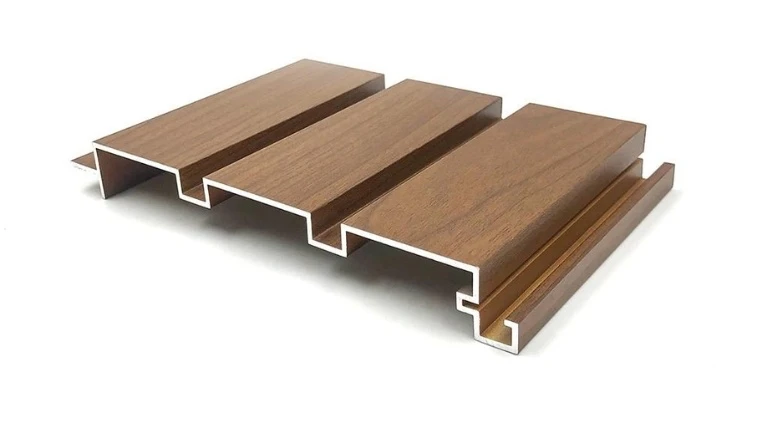
Wood Grain Transfer: The Natural Look
What is Wood Grain Transfer? Wood grain transfer is a process where a wood grain pattern is applied to the aluminum profile through heat transfer. This provides the natural appearance of wood while maintaining the benefits of aluminum.
Key Advantages
Aesthetic appeal of natural wood
Durable and maintenance-free
Resistance to corrosion and weathering
Ideal for architectural applications where wood-like finish is desired
Custom Aluminum Extrusion Process
At HTS Aluminum Profiles, we specialize in delivering custom aluminum extrusion solutions tailored to your specific needs. Here’s a step-by-step guide to our customization process:
Step 1: Initial Consultation
Your journey begins with an initial consultation where we discuss your project requirements. We encourage you to share your design concepts, application needs, and any critical parameters that the aluminum profile must meet. This collaborative approach ensures that we fully understand your vision and objectives.
Step 2: Design and Engineering
Leveraging our extensive experience in aluminum extrusion, our skilled engineers work closely with you to refine your design. We consider factors such as the aluminum alloy grade, temper, and mechanical properties required for your application. Our team uses advanced CAD software to create precise technical drawings and 3D models of the proposed profile.
Step 3: Die Fabrication
Once the design is finalized, we proceed to manufacture the custom extrusion dies. Our precision die-making process ensures that the final profile will match your specifications with high accuracy. We employ state-of-the-art CNC machines to craft dies that can withstand the rigors of extrusion while maintaining tight tolerances.
Step 4: Aluminum Extrusion
With the dies ready, the actual extrusion process begins. We select the appropriate aluminum alloy and heat it to the precise extrusion temperature. The heated billet is then pressed through the die to create the custom profile. Our extrusion presses, ranging from 600 to 3600 tons, are capable of producing a wide range of profile sizes and shapes.
Step 5: Surface Treatment and Finishing
Following extrusion, the profiles undergo various surface treatments as per your requirements. Options include anodizing, electroplating, sandblasting, powder coating, fluorocarbon painting, and wood grain transfer printing. These processes enhance the profiles’ durability, corrosion resistance, and aesthetic appeal.
Step 6: Quality Assurance
Quality is at the heart of everything we do. Each custom aluminum profile is subjected to rigorous quality checks to ensure it meets ISO standards and our European quality certifications. We perform dimensional inspections, mechanical testing, and surface finish evaluations to guarantee that your profiles are delivered without defects.
Step 7: Packing and Delivery
After passing all quality inspections, the aluminum profiles are carefully packed to prevent any damage during transit. We use robust packaging materials and methods tailored to the profiles’ dimensions and your delivery preferences. Our logistics team then manages the safe and timely delivery of your custom aluminum profiles to your specified location.
Step 8: After-Sales Support
Our commitment to your satisfaction extends beyond delivery. We offer comprehensive after-sales support to address any concerns or additional requirements you may have. Our customer service team is always ready to assist you with any questions or feedback.
Partner with Us
We are committed to delivering precision-engineered aluminum profiles that meet the highest standards of quality. From initial design to final delivery, we provide a seamless and personalized experience, ensuring that your custom aluminum solutions are produced efficiently and to your satisfaction.
Take the next step in your project and contact us for a consultation on your custom aluminum extrusion needs.
